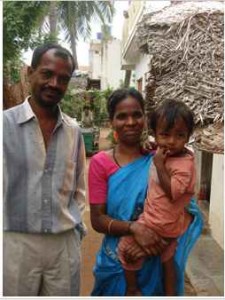 We are at war with ourselves and with each other. Because of this conflict human potential is not reached. So the question becomes: what is the root of our conflict? Understanding this will help us become more successful in the long run both as individuals and as a society.
We are at war with ourselves and with each other. Because of this conflict human potential is not reached. So the question becomes: what is the root of our conflict? Understanding this will help us become more successful in the long run both as individuals and as a society.
Some of our inner conflict can be traced to the war between the scientific world-view and the spiritual world-view. The scientific view is based on verifiable facts that exist in space and time. Things in this realm are measurable and describable, and amenable to logic or logos. The spiritual view on the other hand is based on a deeper reality that is not accessible to language and logic. This is not directly describable and poetry and myths or mythos are used to talk about it.
It is almost as if reality is split into two independent sections. One aspect is in space-time and describable by logos while another aspect is deeper and beyond space-time and mythos is used to describe it. Reality itself is not split. It is whole. It is our ability to comprehend that has limitations. This makes it appear as if some parts of reality are unreachable. It is as if evolution has fashioned a filter that takes as “useful” only those aspects of reality that are directly relevant for survival. This filter blinds us to all other aspects of reality that evolution found irrelevant to survival. This means that the reality referred to by logos is a small subset of the greater reality that is the domain of mythos.
Since reality is one and not split we cannot just rely on either just mythos or just logos. We need both. Mythos gives us meaning. It also provides us with tools to understand via poetry, metaphors, and myths, deeper aspects of reality that would otherwise be unreachable. Mythos provides us the means to survive as a species in the face of what appears on the surface as a cold and uncaring universe.
Logos provides us with tools that help our immediate survival and provide us with material comforts. Logos provides us with language and logic to fashion rules that take the deeper spiritual insights provided by mythos and turn these into laws that drive our daily conduct. Logos provides us with an ability to create evidence based, verifiable, non-subjective systems.
Logos is cold hearted and sees nothing special in life or love. Mythos on the other hand sees these to be the very vital aspects of reality. Logos puts us in an ego-centered selfish mode. Mythos turns us into selfless and loving creatures looking out for the greater good. Logos gives us material comfort while mythos helps end suffering. Logos takes care of our physical well-being while mythos does the same for our spiritual well-being. Logos creates conditions for our short term survival as a species while mythos ensures our long-term survival. This is because mythos provides us insight into deeper spiritual truths. Our moral and ethical codes arise from these deeper truths. These are what allow us to function as a society and on whom our long term survival depends. The collapse of mythos can lead to collapse of societies and threaten our very survival as a successful species.
Since we are immersed in space-time reality, it is easy to give more emphasis to logos over mythos. When this happen we either take our myths too literally or we dismiss them as meaningless. This either leads to dogma and fundamentalism, or to atheism. This is at the heart of our problems. The tilt towards relying too much on logos is at the root of our inability to solve the challenges we face today, in spite of the technological progress we have made. Over-reliance on logos cuts us off from mythos and creates ego-driven individuals and societies. Instead of love and cooperation, our lives are filled with disconnected individualism that drives us to dominate and is the cause of discord. All our scientific progress now becomes dangerous and destabilizing rather than a source of solution and peace.
Saints and prophets, both ancient and modern, have warned us against this. Every verse of the Quran is called an ayah (or parable) for this reason. Similarly St. Augustine insisted that aspects of Bible that seemed improbable from the literal sense should be interpreted allegorically. Lord Buddha refused to even talk about God for this reason as he was not willing to take God’s transcendence and bring it down into the domain of logos, only to be misunderstood or misinterpreted.
The challenge before humans is not economical, nor is it scientific or technological. Our challenge is to find the balance between mythos and logos. If we are able to strike this balance, humans will not only be able to enjoy the material comfort provided by our advances in science and other fields, but we shall also be able to gain new spiritual insights and live our lives in the bliss and joy deep spiritual communion with our deeper essence.
Credits:This has been written by Raj Shah and edited by Ketna Shah.


